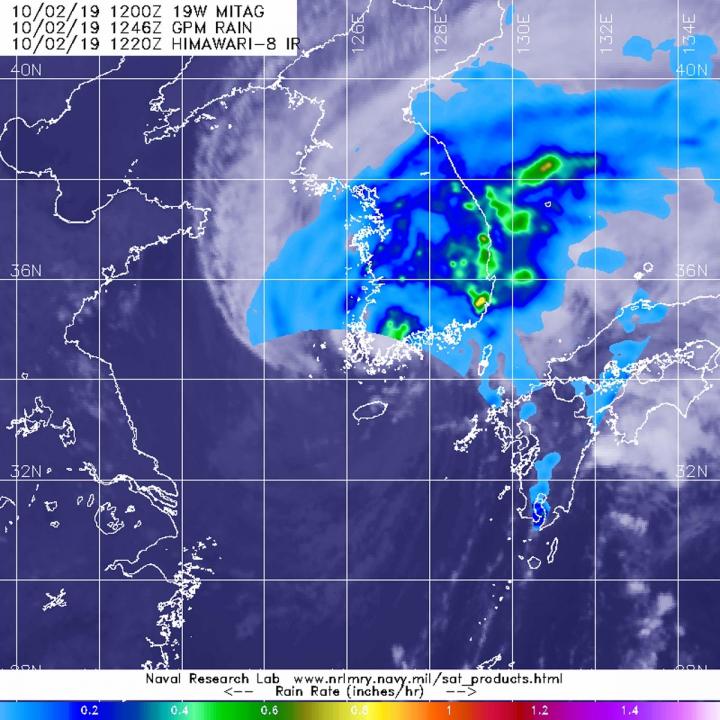
Credit: NASA/NRL
Tropical Storm Mitag was dropping heavy rainfall along coastal areas of South Korea and lighter rainfall over the entire country. The Global Precipitation Measurement mission or GPM satellite provided a look at the rainfall occurring from the system.
The GPM’s core satellite passed over Tropical Storm Mitag on Oct. 2 at 8:46 a.m. EDT (1246 UTC). GPM found heaviest rain falling in scattered areas over the eastern and southern coasts of South Korea and over the Sea of Japan. GPM found light rain falling over the rest of South Korea at around 0.2 inches (5 millimeters) per hour.
On Oct. 2 at 11 a.m. EDT (1500 UTC), Mitag was located near latitude 34.4 degrees north and longitude 126.3 degrees west. Mitag was centered about 91 nautical miles south of Kunsan Air Base, South Korea. Maximum sustained winds have decreased to near 40 knots 46 mph (74 kph) and weakening.
Mitag is moving northeast and is currently over land in South Korea. Forecasters at the Joint Typhoon Warning Center expect that the storm will become extra-tropical in the Sea of Japan.
###
Typhoons and hurricanes are the most powerful weather event on Earth. NASA’s expertise in space and scientific exploration contributes to essential services provided to the American people by other federal agencies, such as hurricane weather forecasting.
GPM is a joint mission between NASA and the Japan Aerospace Exploration Agency, JAXA.
Rob Gutro
NASA’s Goddard Space Flight Center, Greenbelt, Md.
Media Contact
Rob Gutro
[email protected]
Original Source
https:/




